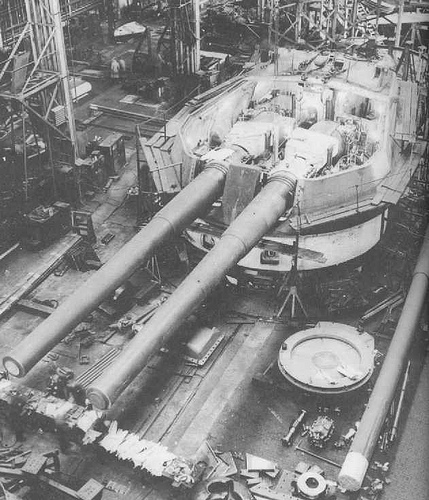Why were so many warships never built ? Naval history is littered with warships that were planned or designed but never built, especially in the past century or so.
Iowa-class battleship Kentucky (BB-66). Public domain, via Wikipedia.
There were many reasons why proposed ships never saw the light of day. Some designs were abandoned at draft stage because infrastructure limits such as specific harbour depths, dock or canal dimensions couldn’t handle a ship of that scale. Sometimes it took only one key limit to force designs in other directions. Other proposals were more practical but didn’t get past peacetime financial constraints or political limits. Sometimes a design was overtaken by other thinking. Or they were pure thought experiments, such as the Tillman ‘maximum’ battleship, which was developed as an illustration for US political purposes; or Admiral Sir John Fisher’s 48,000 ton Incomparable of 1915, which he visualised as an ultimate extension of his rather iconoclastic tactical theories.
In wartime a major issue was resource allocation; many ships fell victim to competing priorities. Many programmes were also truncated with war’s end, often leaving half-built ships on the slipways or fitting out. Among the more prominent cancellations of the Second World War were the last two Iowa-class battleships, Kentucky and Illinois.
Britain’s 1921 ‘G3’ battlecruiser – cancelled by the Washington Treaty. Via Shipbucket, creator ‘Hood’, http://www.shipbucket.com/license
But these weren’t the only reasons for a particular ship or class being abandoned. Others include:
- Overrun by invasion. In February 1918 the Germans captured the yards at Nikolayev (Mikolaiv) where the Russian battleship Demokratiya, formerly Imperator Nikolai I, was being built. The incomplete hull later fell into Allied hands and was destroyed to prevent it being taken by Soviet forces. Incredibly, much the same thing happened again in the same place, a generation later. In the late 1930s Joseph Stalin embarked on a determined effort to re-develop the Soviet navy. The centrepiece was the Project 23 Sovietsky Soyuz class battleships, and the Sovietskaya Ukraina was captured on the building ways when the Germans took Nikolayev in August 1941. The hull was partially dismantled by the Germans; and what remained was damaged when they destroyed the supporting blocks as they withdrew in March 1944. The French ran into a similar issue when they were invaded by Germany in 1940, but their two Richielieu class battleships were fitting out, and far enough advanced that they could put to sea despite being incomplete.
- Overtaken by technology. At the end of the First World War the British had four ‘Admiral’ class battlecruisers on the books: HMS Hood, which was well advanced; and three others of modified design that had been authorised but suspended. It was a time of significant engineering re-consideration and general up-scaling, and the Admiralty finally cancelled the three in favour of all-new designs, the ‘G3’ class. Technical change applied to an even greater extent in the Second World War, where the rise of aircraft as a key force at sea prompted major surface combatant cancellations in favour of aircraft carriers – including the US Navy’s colossal Montana class battleships.
- Killed by treaty. The ‘Washington Treaty’ of February 1922 – technically the ‘Five Power Treaty’ – stopped an emerging naval race between the major world powers. A whole generation of battleships and battlecruisers were cancelled. The unusual fact is that this was the first – and virtually last – time that effective naval arms control was achieved by treaty, although that didn’t stop a certain degree of cheating.
For more on naval history, check out my book The Battlecruiser New Zealand: a Gift to Empire. Click to buy.
Also check out my articles on the Battle of Jutland and my analysis of the merits of submarines.
Additional articles can be found on the Home Page of the Navy General Board Website.
Copyright © Matthew Wright 2017





Recent Comments